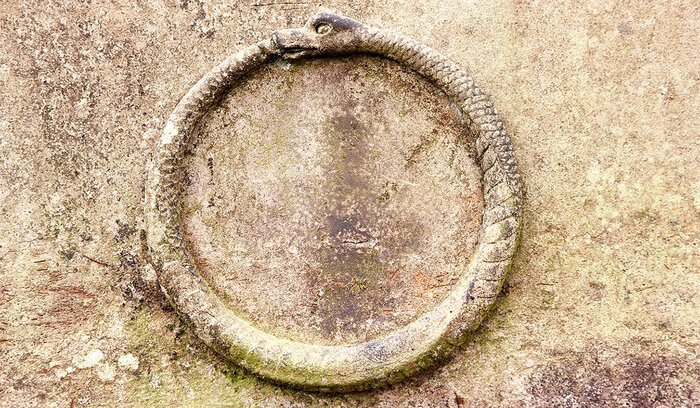
Uroboros
[oor-ə-BUR-əs]
Part of speech: noun
Origin: Greek, 1940s
1.
A circular symbol depicting a snake, or less commonly a dragon, swallowing its tail, as an emblem of wholeness or infinity.
Examples of Uroboros in a sentence
"The way one event blends into another makes summer festival season feel like an entertainment uroboros."
"My brother described the all-inclusive vacation he just got back from as “an uroboros of constant food and drink.”"
About Uroboros
“Uroboros” (and the alternate spelling “ouroboros”) is taken from the ancient Greek name “οὐροβόρος” (“ourobóros,” meaning “tail-devouring”).
Did you Know?
The uroboros, represented as a snake eating its own tail, has been a symbol of eternity, regeneration, and the cycle of life dating back to ancient Egyptian culture, but it has also appeared across Chinese, Indian, and Norse civilizations. In a figurative sense, the word “uroboros” is used to describe circumstances that are cyclical and regenerate themselves. Often both the the word and symbol are used to invoke vast philosophical questions about the rhythm of life and death; however, it has also been used as a metaphor for modern issues that seem to both consume and regenerate, such as news cycles, gossip, and fashion trends.








